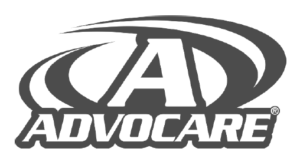It is not just about getting your exercise in. You can maximize the results of your exercise regimen by maintaining a keen awareness on great technique. Tweet This!
Many, if not most of those who are involved with AdvoCare have embarked on a journey of lifelong fitness. When you invest the time and effort in an exercise program, you expect to see optimum results from your training, right? But, the truth is it may not happen as fast or exactly how you picture it.
I often find it is not the training program or the choice of exercises, but rather the execution that can make all the difference. It is paying attention to the details that will help lead you down the path to achieve the results you want. Tweet This!
A heightened focus on technique is so important to all types of training and coaching. Tweet This! Even the little things like hand or foot position, body alignment and actually focusing on the muscles being worked – not just the exercises – can make a big difference. Having excellent technique is more important than the weight being used or the number of repetitions. Sacrificing technique for more weight or more repetitions can actually hinder your results and possibly even lead to injury.
Control the Weight.
With every exercise and repetition, controlling the weight through the entire range of motion is key; when raising the weight and especially when lowering the weight. It is one of my team’s greatest desires that our fitness clients and athletes lower the weight slower than when raising it – it is that important! This controlled motion (eccentric contraction) forces more muscle fibers to come into play. This fatigues and utilizes far more muscle than letting the weight “free fall” to the down position.
Similarly, when controlling the weight, we minimize any momentum, forcing the muscles to work harder. For example, I have had athletes do double digit kipping pull-ups, but could not perform one strict pull-up. The momentum involved during the kipping movement minimizes activation of the actual muscles used in a traditional pull-up. It really comes down to obtaining (and feeling) the full muscle contraction.
Technique + Body Alignment.
At the start of and throughout every repetition, body alignment is critical to proper execution of any exercise. Whether squatting, rowing or pressing, keeping the spine tight and straight is fundamental to providing a solid structure to lift and decrease the chance of injury. A rounded position decreases the integrity of the spine, limiting range of movement and structural stability.
Foot, knee and hip alignment should also be a point of focus (in regards to standing exercises). In any knee flexion, as in a squat or lunge, the foot and knee must track in the same line. It is not a matter of having the knees and feet both pointing out (or in), just so long as they are aligned. If they do not point in the same line, this creates torque on the entire leg. This places unnecessary stress on the knees, ankles and feet. Beware, as it is a common thing to see trainers advising their clients to push the knees out. Always remember to keep the feet and knees aligned during a workout.
Stay tuned for future blog posts discussing specific details and tips on techniques for various exercises to help meet your training needs!





